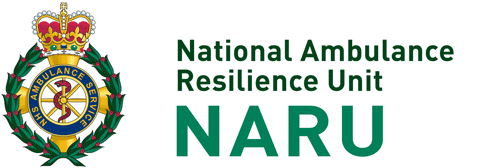Clean-up work is beginning in Salisbury after the appalling nerve agent attack, to bring a small number of potentially contaminated sites back into safe use for the people of the city and its visitors.
This follows the continuing handover of sites from the police investigation to recovery operations, including The Maltings, the cemetery, Zizzi and the Ashley Wood compound. In total nine sites, three of which are in the city centre, have been identified as requiring some level of specialist cleaning.
Today (Tuesday 17 April) a small cordoned area of London Road cemetery was the first area to be reopened to the public after extensive investigations and testing established that it was not contaminated.
All remaining potentially contaminated sites will remain secured and the current scientific assessment is that the remainder of Salisbury is safe for residents and visitors. Public Health England have reaffirmed that the risk to the general public is low.
Work to clean each site will involve a process of testing, removal of items which may have been contaminated, chemical cleaning and retesting. Sites will not be released back into use until test results and the work undertaken has been reviewed and approved by the government’s decontamination science assurance group.
The work, which is expected to take a number of months, is being planned and overseen by Defra based on expert advice from Defence Science and Technology Laboratory (Dstl), Public Health England, Department for Health and Social Care, Home Office, and Ministry of Defence (MOD). The clean-up operation will be carried out in partnership with Wiltshire Council with support from the MOD, who are providing specialist teams to carry out work on the sites. Around 190 specialist military personnel from the Army and RAF will support the operation.
Defra’s Chief Scientific Adviser Ian Boyd, who is chair of the decontamination science assurance group overseeing the work, said:
Our approach is based on the best scientific evidence and advice to ensure decontamination is carried out in a thorough and careful way. Our number one priority is making these sites safe for the public, so they can be returned to use for the people of Salisbury. Thanks to detailed information gathered during the police’s investigation, and our scientific understanding of how the agent works and is spread, we have been able to categorise the likely level of contamination at each site and are drawing up tailored plans.The public will begin to see more activity in the city as the work gets underway. In the coming days residents can expect to see current cordons around the most public sites replaced with secure fencing, backed by police patrols and security guards. At certain points during decontamination, some cordons will be temporarily expanded to allow workers access to the sites with specialist equipment and ensure public safety as work is underway. Wherever possible this sort of disruption will be kept to a minimum. As work in the city moves from site to site the local authority will keep businesses and the community informed. The clean-up work goes hand in hand with the £2.5m already announced to support businesses, boost tourism and meet unexpected costs in recognition of the exceptional response and recovery effort in Salisbury. Baroness Jane Scott, the Leader of Wiltshire Council, said:Meticulous work is required and we expect it will be a number of months before all sites are fully reopened.
We are pleased that work will be starting to decontaminate the sites affected by the shocking attack in our city. Working together with local and national agencies we are doing all we can to help Salisbury return to normal. Our main concern is to ensure that Salisbury is safe for residents, businesses and visitors and that the city can focus on the future, its recovery and that it will go from strength to strength.
Notes to editors:
- The nine sites identified are: The Maltings, Zizzi, the Ashley Wood compound, the Mill pub, two areas of Bourne Hill, Salisbury ambulance station, Amesbury ambulance station, the home of the police officer who became unwell following the incident, and the Skripal’s home. The Mill pub and Skripal’s home remain part of the ongoing police investigation.
- A tenth site, a small cordoned area of London Road cemetery, reopens to the public today (Tuesday, 17 April) after extensive investigations and testing established that it was not contaminated.
- On 12 April the Organisation for the Prohibition of Chemical Weapons (OPCW) published their report. It confirmed the UK findings: the toxic chemical used in the attempted assassination of Sergei and Yulia Skripal was a military grade nerve agent – a Novichok. The Foreign Secretary gave a statement on the OPCW report.
